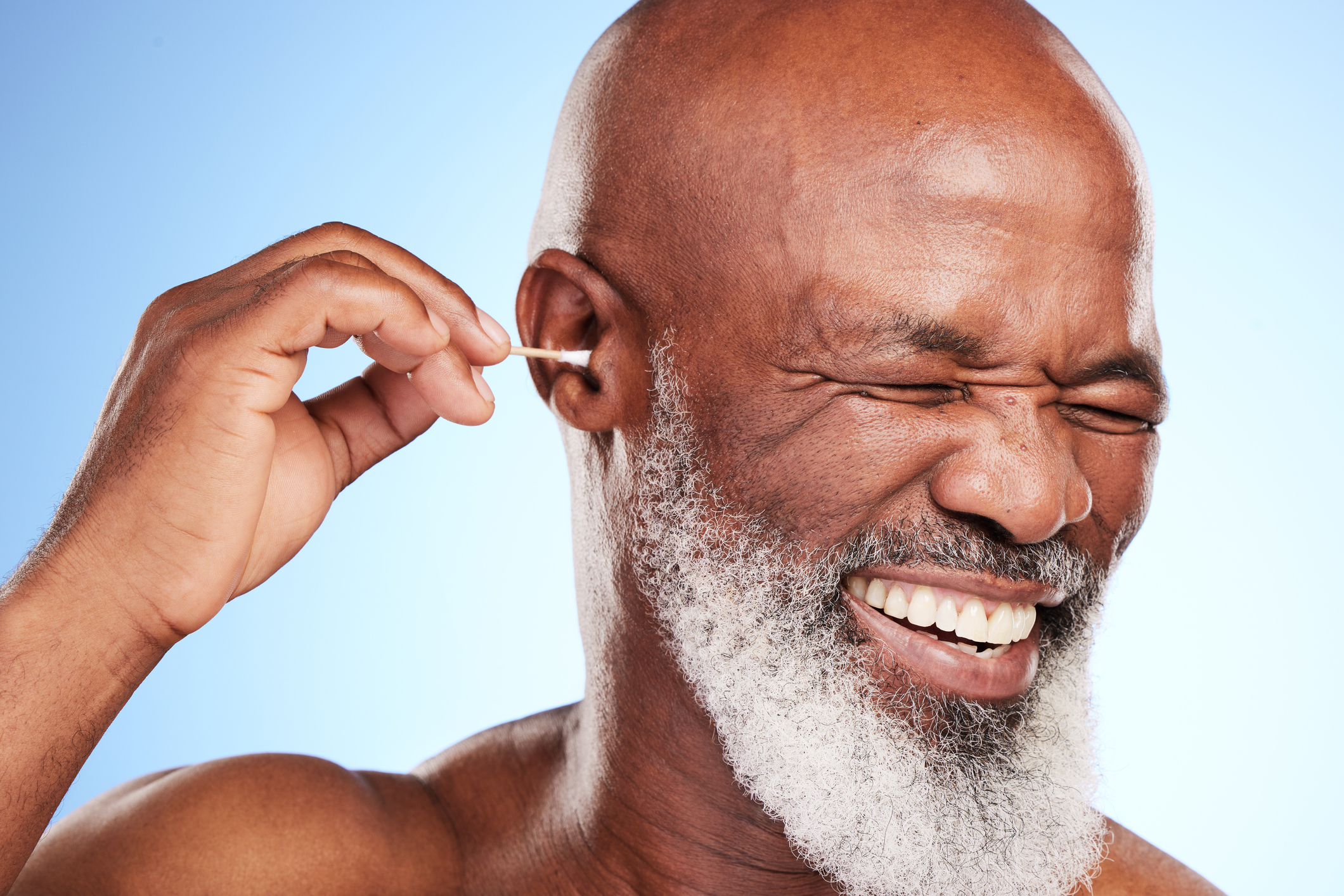Despite all the effort some people go through to rid themselves of earwax (in medical terms, cerumen), you might find it surprising to know that it’s a pretty natural collection of secretions from both the sebaceous and sweat glands in the outer ear canal. On the journey to the ear opening, earwax picks up dead skin cells that shed regularly, just as they do on skin. By moving out this debris, earwax cleanses the ear canal for you. Earwax also has antibacterial properties that help fight infections.
For most people, earwax finds its way out of the ear canal imperceptibly, but some people produce more earwax than others, and it can become annoying, especially if it hardens and gets stuck. The problem gets worse when you attempt to remove earwax unsuccessfully. The following tips from board-certified otolaryngologist Jordan S. Josephson, MD, can help…
- Know the signs of an earwax blockage—ringing, decreased hearing, feeling of fullness.
- Don’t stick anything in your ear canal.
- Loosen earwax buildup while you shower.
- Don’t ever use an ear candle.
- See your doctor for earwax
- Don’t use force to remove earwax.
- Clean hearing aids daily.
- Do know the signs of an earwax blockage, or impaction. These include ringing, decreased hearing and a feeling of fullness in the ear. These symptoms also can be due to other causes, including an infection that needs medical treatment.
- Don’t stick things into your ear canal…and yes, that includes cotton swabs. Too often, the tip of the swab pushes the wax deeper into the ear and causes it to become impacted. Also avoid over-the-counter “tools,” such as probes. While you can use camera devices that attach to your phone to see the wax, do not put them into the entrance of the ear canal. Putting anything in your ear canal can cause damage to your eardrum. Rule of thumb: Don’t put anything smaller than your elbow in your ear canal.
- Do try to loosen a buildup of earwax during your next shower. Here’s how: Fill an unused plastic eyedropper bottle (not a glass bottle or glass dropper because if it breaks in the shower, you can get glass in your feet) with mineral oil or olive oil, and take it into the shower with you. Tilt your head to the left, left ear to left shoulder, and place three or four drops of oil in your right ear. Tilt your head to the right and repeat in the left ear. Give the oil a few minutes to surround the wax and soften the clog. Now tilt your head to the left again, and pull the right earlobe down to straighten the canal and allow some water from the shower to gently enter your ear (for safety, do not use a high-pressure showerhead setting directly into the canal). As you move your ear down toward your shoulder, the water and oil hopefully will allow the wax to slide out. Repeat with the other ear. Note: Do this twice a week preemptively, and you may be able to avoid any earwax buildup.
- Don’t let anyone use an ear candle in your ear. An ear candle is a hollow cone that is inserted into the ear and lit, supposedly to create suction to draw out earwax. I’ve seen patients who have tried this unsafe technique end up with first-, second- and even third-degree burns of the ear canal and ear.
- Do see your health-care provider for the best earwax removal. Earwax removal is the most common ear, nose and throat procedure done in primary care offices in the country. If you have recurrent or stubborn wax or a possible ear infection, see a board-certified otolaryngologist, especially if you’re having pain or trouble hearing. Not only do doctors have the best earwax-removal tools, they also know how to use them properly.
- Don’t apply a lot of force or work vigorously to clear out wax. That can cause trauma to the eardrum and auditory ossicles (the little bones in the middle ear, including the hammer (malleus), anvil (incus) and stirrup (stapes). You may end up with a hole (perforation) in the eardrum, hearing loss, dizziness or ringing in the ears. Those who have had prior ear surgery or have a known hole (perforation) should definitely leave earwax removal to a doctor for safety.
- Do clean your hearing aids daily as directed. They pick up earwax, which can clog the hearing aids and leave them ineffective. Change the hearing aid filters as often as needed because these can become clogged and obstruct hearing. Speak to your audiologist about how to maintain your hearing aids. Hearing aids also can impede the natural flow of earwax, leading to a blockage. If this happens, see your ear doctor for care and to remove any earwax buildup.

